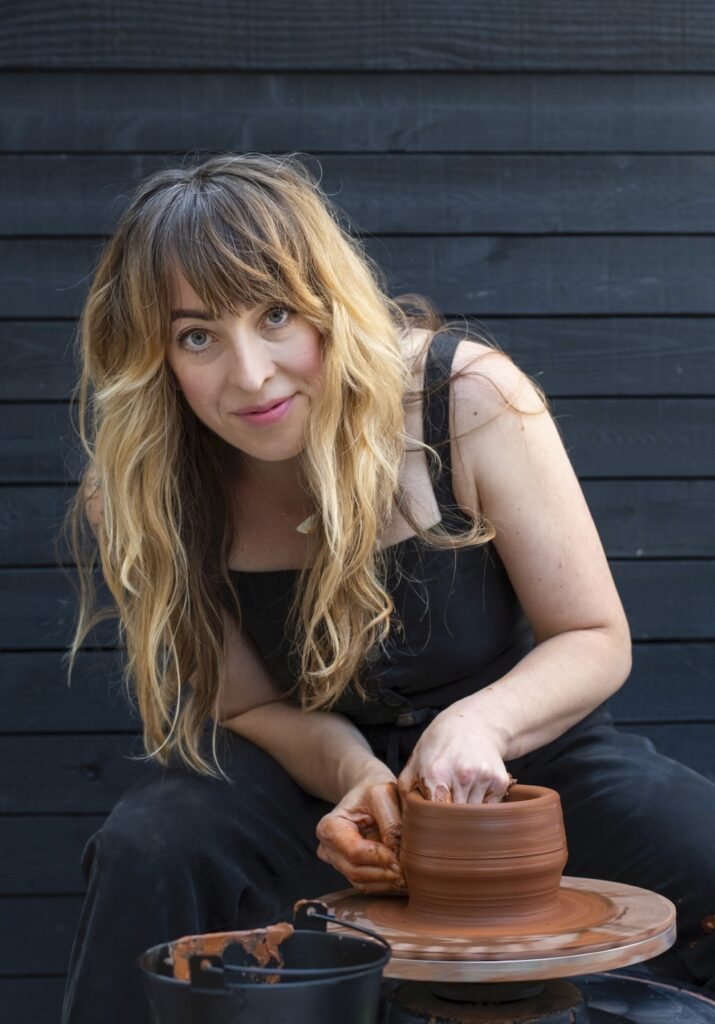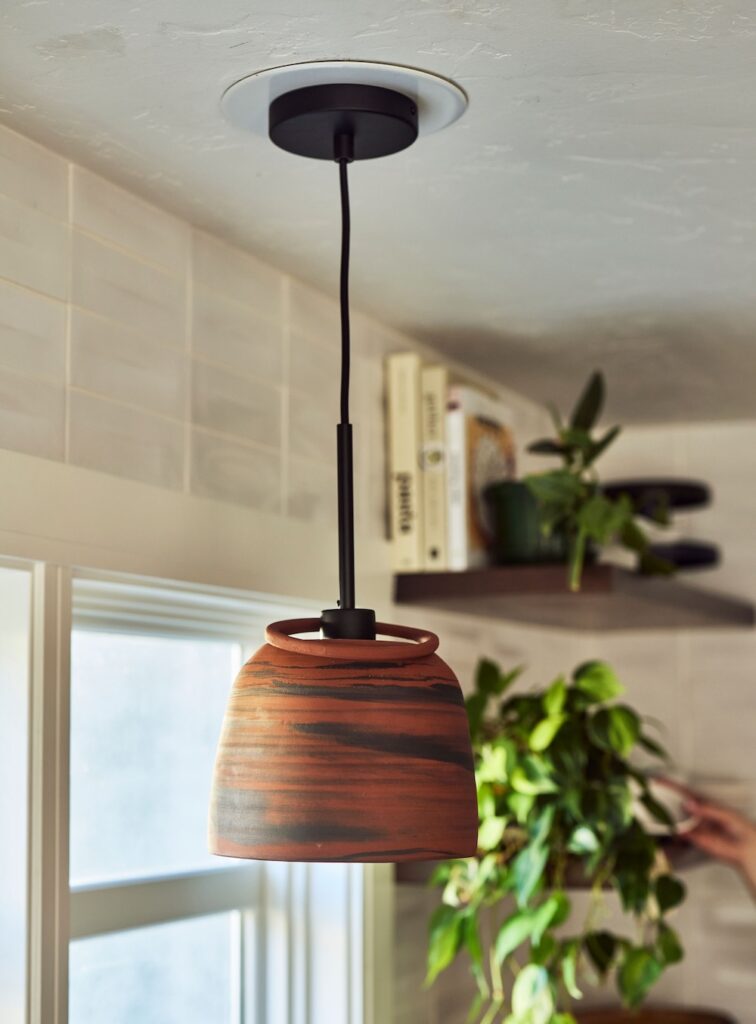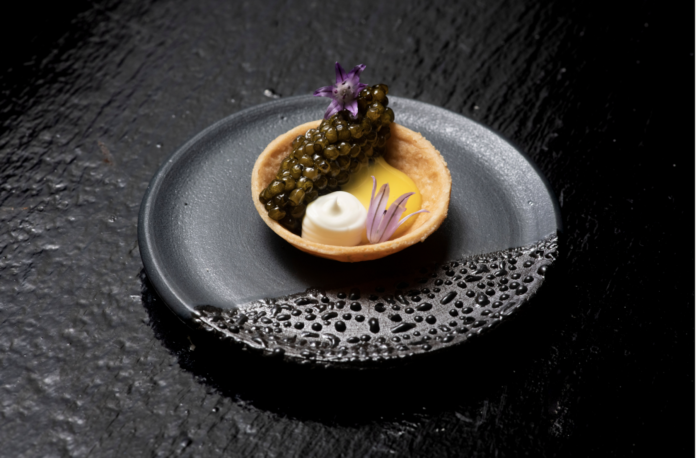Ceramics artist Erin Hupp now creates bespoke pieces in clay primarily for home interiors, restaurants, and hotels. But once, art was an untapped interest that had long waited in the wings while she went down a much different career path. Born and raised in Milwaukee, the Wisconsinite went to UW in Madison, where she had her first, early encounter with the medium of clay.
“I fell in love with ceramics in my early twenties when I worked at a pottery production studio. I met a welcoming group of local ceramicists and we all taught each other and learned together. It was the beginning of a lifetime passion,” Hupp told 48hills.

After graduating from college, (BS, international relations and a certificate in environmental studies, 2002), she lived in Sydney, Australia and traveled to Southeast Asia. Then she moved to North Carolina to pursue advanced degrees, (the University of North Carolina at Chapel Hill, Juris Doctor and MA in City and Regional Planning, 2008.)
After finishing law school, she moved to San Francisco and has lived here since, with the exception of a year in London, when she says she lived near the British Museum and fell in love with clotted cream and scones. With most of her time focused elsewhere—until recently—she never had time for a formal arts education.
While actively pursuing a career in law, first specializing in land use and then in child welfare, she found that explorations in clay were becoming an important hobby. Throughout this time, she often wondered about “that other life”—a different path she envisioned, one in which she had pursued an MFA and focused solely on making art.
“So, I decided to find out. And six years ago, I took the thrilling yet terrifying leap to a full-time career in art,” Hupp said.
A supportive creative community has proven vital in landing that jump. Currently residing in Oakland, Hupp says the Bay Area is full of passionate artists eager to collaborate, including metalsmiths, glassblowers, floral and interior designers, and chefs. They have helped to shape and transform her experience and her work, she says.

“My art practice thrives on mutual collaboration with other artists. These collaborations continually help me refine and redefine my practice, push my limits, and build trust in my process. One of the biggest benefits of working with others is seeing my art through new eyes. It helps me see my art and my medium of clay in a new way which often expands my art practice,” Hupp said.
She brings up the Japanese Zen term “shoshin,” which translates as “beginner’s mind,” as one root of this need to work with others. She says the concept refers to a paradox: the more you know about a subject, the more likely you are to close your mind to further learning. Engaging in teamwork creates a synergy that is a stopgap to possible stagnation.
Describing her work as both functional and focal by design, Hupp says her art connects people to the coexistence of both the beauty and purpose of their day. Organic, connective, and sensory qualities come through in her pieces. Hupp’s work can be experienced currently at various restaurants in the city including Californios, Nightbird, Sons and Daughters, Pasta Bar, Acquerello, Sorrel, and the Stanly Ranch Auberge Resort in Napa.
“In restaurants, my ceramics provide the architecture for the chef’s menu and how it will exist within the restaurant space. I see the restaurant as a live, ever-evolving gallery in which people can touch, hold, feel, interact, and experience my ceramics,” she said.
“Each of my pieces is intended to draw you closer to the slow moments of connection—to your surroundings, your home, the restaurant you dine in and the food you eat. Currently, I create collections of ceramics [in which] each piece is subtly unique. That subtle wabi-sabi difference captures your attention and connects you to the moment, the experience of being in a room near a lamp, gazing at a reflection in a mirror, or enjoying a tasting menu at a restaurant,” Hupp said.

Because of her background, Hupp says she is a “big fan of time blocking” and notices that the disciplines within marketing, social media, meetings, and accounting can seep into her studio time, though she strives to remain present and focused on the creative experience. Creating a batch of ceramic pieces takes her from three to four weeks, beginning with the first step of hand-turning pieces on a potter’s wheel after wedging or kneading the clay. After the piece is made, it dries to a leather hard state, then Hupp sands it. After it is completely dry, work is then fired in her kiln, sanded again, glazed, and finally, loaded back into the kiln for a last firing.
“My studio is small but perfect, filled with four different types of clay, glazes, sponges, and tools. I have several metalwork tables and a drying cart, both purchased from a restaurant store. I also use a digital food scale to weigh clay and glaze components. It is a working studio with concrete, clay-covered floors. But I am still surrounded by inspiration. Strider Patton, a Bay Area muralist, painted a colorful mirror on the exterior of my studio and I have a mood board teeming with art, quotes, and a notable photo of Georgia O’Keefe in her 80s, when she lost her eyesight and made pottery instead of paintings,” Hupp said.
When Hupp first took on her art and design practice full-time, she focused solely on ceramic tableware for restaurants. More recently, she has expanded into interior design for both public and private spaces with lamps, mirrors, vases, and soon, pendant lamps.

Most recently, Hupp has been working on a new mirror design. This past fall, she launched her Mirror Portal collection, featuring installations of mirrors, both grouped and individual, which become portals to the intricate details of a room by catching the viewer glimpses of fabrics, colors, textures, art, light, and people present around them.
“Art is always personal. It is like taking your vulnerabilities, dreams, and ideas and presenting them to the world for subjective judgment. Each time I launch a new collection I hold my breath as I send it out into the world after working on it for a year or more,” she said.
Hupp encourages us to connect to our environment more deeply as we interact with her work. She wants us to touch, inspect, and experience her pieces as art, but also appreciate their functional craftsmanship.
On a personal level, Erin Hupp thinks of the decision to focus on her creative work constituted a coming back to her true self.
“I felt whole again. And I hope sharing my story will inspire others to take a creative leap for themselves— whether it be writing a book, painting, or pursuing another creative endeavor,” she said.
For more information, visit her website at erinhuppceramics.com and on Instagram.





